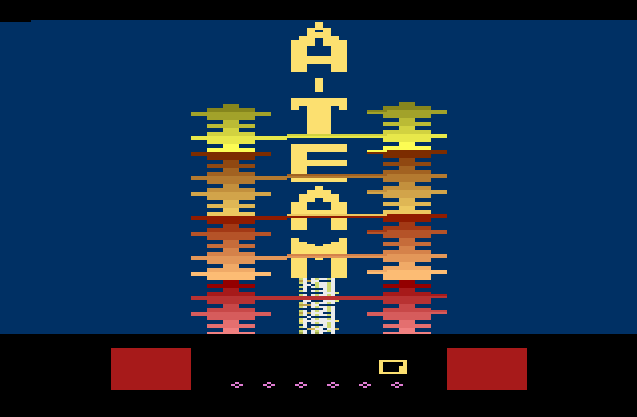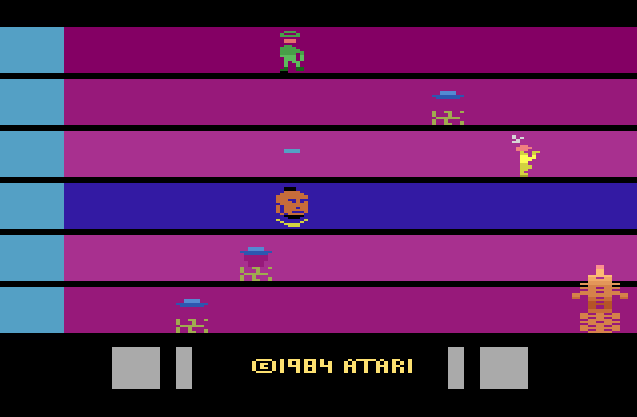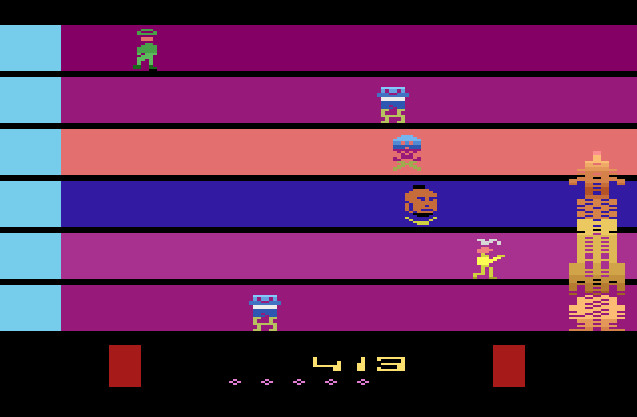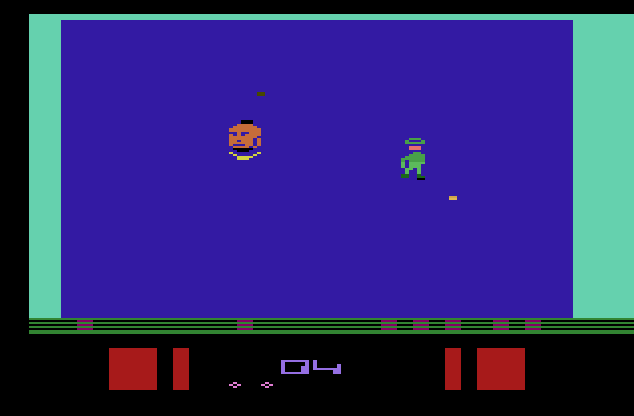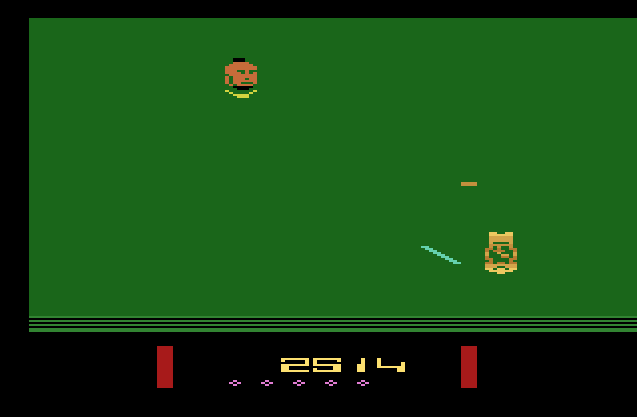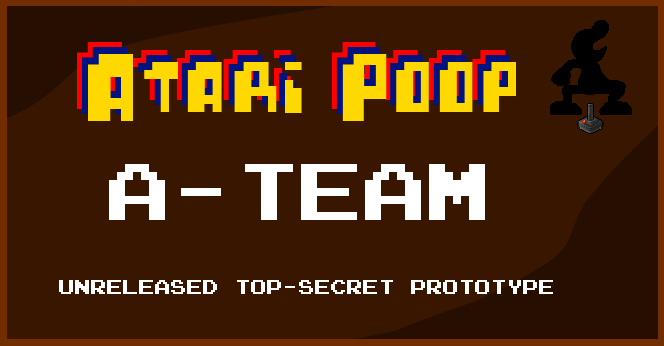
Atari Poop
Atari Poop – A-Team
The usual author of Atari Poop, Atsinganoi, is off this week for reasons I cannot reveal. I, Eric Bailey, am replacing him again, following my “success” with my prior effort at doing so, with Atari Poop – Off The Wall.
Before we go any further, I want to clear something up right away: Yes, that A-Team.
The one with Mr. T and fools.
This video game, for the Atari 2600 console and based on the classic television series, is actually somewhat fun. The visuals use the 2600 palette well, while also supporting slick animations with minimal flickering. The iconic avatar of Mr. T is utterly fantastic, and is the character that the player uses throughout the entire gameplay.
There are even multiple parts to the gameplay itself: First, Mr. T, who can fire in eight different directions, has to take out a certain number of enemy agents within a given timeframe. The enemy agents run left and right across four channels, while one particularly nasty guy at the top of the screen slowly advances to the right, while constantly firing downward, posing the biggest threat by far. He is worth many more points, since he can actually kill the player, while the other enemies are more like target practice.
The kill total must be reached before the missile on the right side of the screen is able to complete its launch sequence. Even if this stage is passed, however, Mr. T’s challenges have only just begun, as he is instantly dropped into his next hectic battle with a deadly foe.
This time, there is only one guy to kill, but he has many hit points, and the single bullet he has fired will continually ricochet around the room. This presents a unique, enjoyable challenge: Maneuvering in such a way as to get successful shots off, while also relentlessly dodging that bullet.
Another, similar one-on-one duel follows, although this time fought with different form of weaponry, with more energy-wave-like projectiles. Eventually, gameplay loops back to the four-channel, missile-launch, eight-directional-firing level. There is minimal documentation.
Beyond its high-caliber presentation, notorious media license, and engaging gameplay, A-Team on Atari 2600 is noteworthy for one other particular trait: It was never actually released. It was just a prototype, sitting there, a “canceled” project for the abyss of failure.
But why would a game with such a high-profile media license be canned? Ha, oh, c’mon. This one’s easy. The very nature of its cancellation is in its subject matter: A band of pseudo-governmental mercenary-like operatives that perform missions not quite inside the comfort zone of American jurisdiction? Just as the U.S. military would not be comfortable with the general populace being aware of its black ops, its spec ops, its undercover work — so too could it not even let the mere whiff of an “A-Team” hit the market, official or non.
Attentive readers may ask: But then why not cancel something like the Mission: Impossible films? They seem to toe a certain fine line of federal cloak-and-dagger world-shifting clandestine motives. Does our government really care that much? What was so special about the A-Team game?
To which I answer: Is it any coincidence that one of the programmers of the A-Team game on Atari 2600 just happened to also be one of the programmers of the 1983 firmware update to the United States’ missile launch code entry program?
Once the Feds figured out that one of their own had been working under a false name on a game that involved nuclear launch codes and premature Earth vaporization, they knew they had to put a clamp on it. The project, despite being primed for picking the pockets of an unsuspecting public, had its plug pulled. There would be no A-Team game because a savvy gamer might just happen to notice that there were indicators, both conscious and subconscious, toward the actual American nuclear launch codes. Imagine what the wrong hands would pay for such information.
Do you doubt me?
This ain’t my first rodeo, kiddos. Cryptography is what I do. It has long been a hobby of mine. I notice patterns that even a computer can miss, and have invented ciphers that, well, let’s just say garnered interested parties at auction. Sure, anyone can write that, and you have no reason to trust me, but I am going to keep writing anyway.
The F.B.I. even has an unsolved murder case involving an as-yet-unbroken code that they have, for years, invited the public to try and solve. Or, at least, ha, they purport that it is unsolved — any decent code-cracker can undo the tumbler on as basic cipher as they depict. Really, they just use it as an entry exam, and squash any evidence to the contrary.
Now I didn’t always know this stuff. No, not at all. But, ah, how I have enjoyed the learning. See, codes are still in use today, and have been for thousands of years. They are a veritable treasure trove of fun little tidbits of information, misinformation, and disinformation. You script kiddies may’ve heard about the Number Stations, but the fourth face of Kryptos says I’m onto something much bigger than the mere temporal locations of mortal beings across this dust speck in the cold black.
As silly as it may seem as my focal point, A-Team is my Holy Grail. Sure, the launch codes may no longer be in use, but this will not stop me. The point is to master the key. Unwind the spool. Trace the origin. What manner of cues were used? What was his or her real name? How far down does the rabbit hole go? How many years forward does its relevance still hold? Who is still in Virginia that can answer my questions? Who was on the phone that night by the cabin?
And are the spooks now tracking me for having posted too much already?
And are they now tracking you for having read it?
